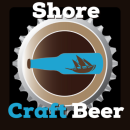Recently I had the opportunity to speak with Jim Lutz, who runs Fordham/Old Dominion in Dover. Jim inherited a number of problems after the two beer companies merged (*shameless plug alert* which will mostly be enumerated in my forthcoming book on beer in Delaware), but one of them is common still among many of the craft breweries as they open. No one knew they were there.
Nearly every brewery has a similar problem: getting the word out. Certainly in recent years people have taken to asking if there are breweries in the area, but oddly enough, locals sometimes miss the fact.
Jim was new to Dover and on his cab ride in town he asked the cabbie if he knew where the brewery was.
“There’s no brewery around here,” the driver said.
Center city blues
The Fordham and Dominion brewery isn’t in a cool downtown converted warehouse, or in a hip restaurant district. It’s in an industrial park. No one is just going to happen by it; people have to know it is there.
Lutz (for those of you who missed out on my other book) ran Wild Goose Beer in the late 80s and early 90s. Wild Goose had a different problem: People didn’t know what craft beer was, really. Having been part of solving the “what” in the past, now it only was a question of the solving the where. It is if not the question, certainly a primary question. Getting people to connect with the beer is a critical part of the craft industry.
Certainly, brand loyalty is an issue, but it isn’t the same conundrum that big beer faces. Craft breweries are perfectly happy to see people drinking craft beer that isn’t theirs; what is important, though, is a kind of loyalty to the attitude.
More than that, though, is this notion of a hometown beer. Those of us fortunate enough to have breweries in our towns, have a certain pride in them. We like to tell people that there’s a brewery in town, to encourage people to try “our” beer and, if they like it, they very well will encourage others.
People who live near a brewery can be its biggest proponents, as long as they know it is there.
A mile deep and an inch wide
Jim talked about their marketing plan being focused on making certain that people who wanted Fordham or Old Dominion beers in the region got them. Back when they were two separate beer companies, there was a push to get big and widely distributed. When Jim came in, that plan was revised, and for great reasons.
People who come on tours, like people who live in town, get a personal attachment to the local beer. Fordham/Old Dominion embraced the festival atmosphere, holding major events with some regularity, added a small golf course for employees and patrons alike, and generally converted the place from a strictly-production place to a destination.
People come and hang out. Since it isn’t too close to a residential district, people can hang out late without bothering the neighbors either while they are there or while they’re on the way out.
Fordham/Old Dominion feels like a destination now (which is convenient, given that it is), and has experienced the kind of growth that comes with it.
Jim said when he first came on, about 1,000 people took brewery tours; 10 times that many took one last year. Next year? The sky is the limit.
